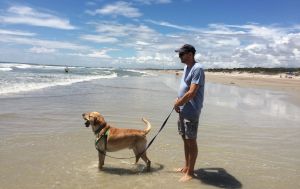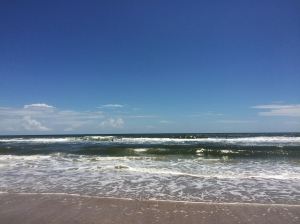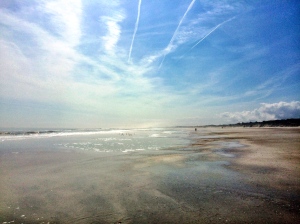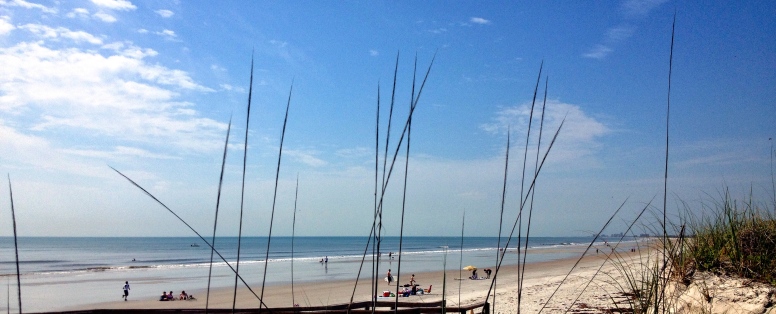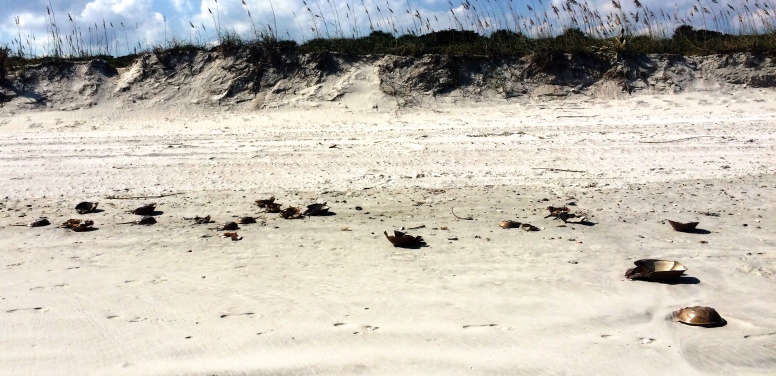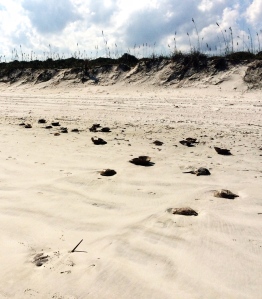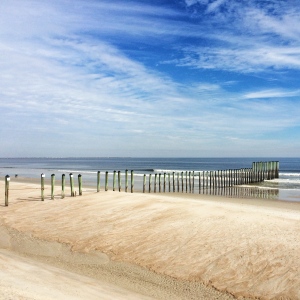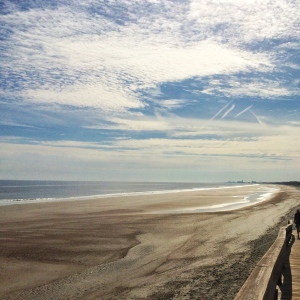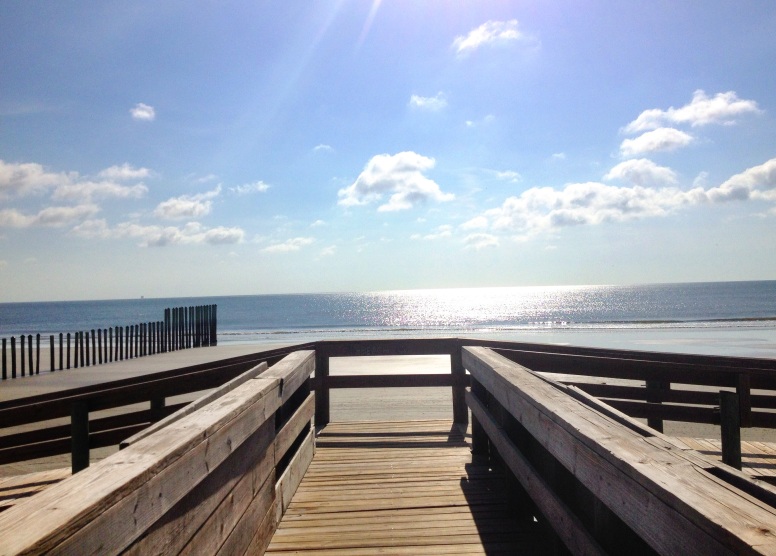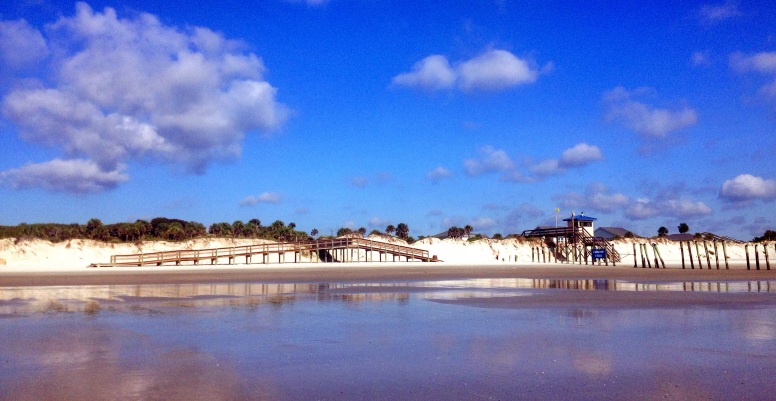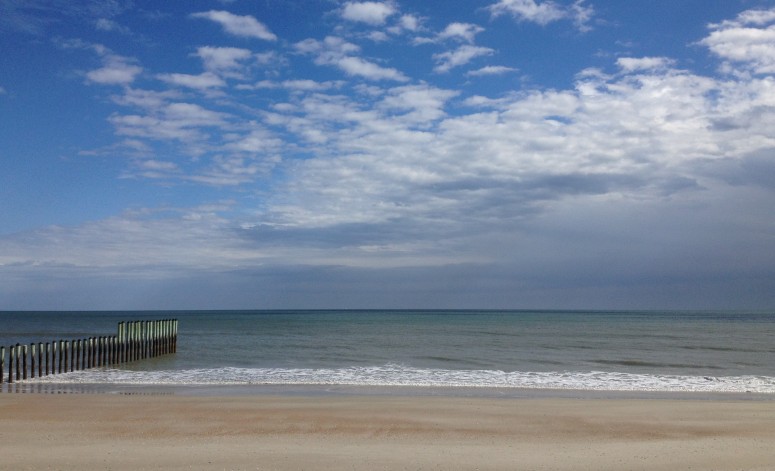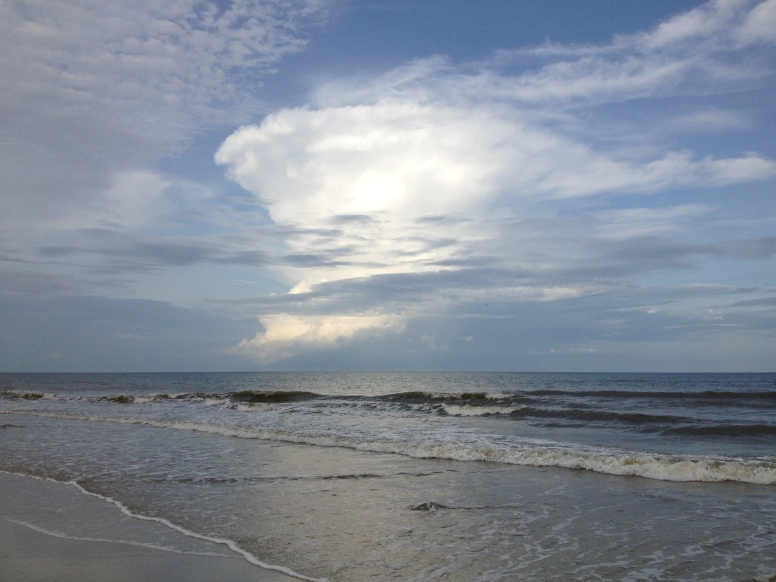For the first time since moving to the coast, I missed seeing flocks of black skimmers gather on Jax area beaches over the winter. They were there on schedule, but I was stuck at home with a scorching case of Achilles tendinitis. Walking in the sand would have felt great. Walking to and from the sand was not possible.
More than a month passed between beach walks at the start of the year. Since then, beach visits are far shorter and less frequent than usual. I miss those daily 3 mile treks through the sand and I’ll have to wait another year to watch black skimmers.
During my grounding from the coast I wondered if it would be the same when I returned. Sure, I knew there would be sand and surf — the most basic beach ingredients. But the details, and even general topography of a beach can change in a day. High tide during a full super moon with an offshore storm can bury the steps and railing of a long-standing wooden walkover under sand and redraw the edge of a dune. Rough seas and wind can sculpt new sand ridges and valleys, and cover yesterday’s tracks with layers of plants and trash from both land and sea.
After a month, would I have to get to know my favorite beach all over again? Would everything be like it was before? Would I feel at home?
Questions like these stem from having too much time to think about stupid stuff thanks to illness (It’s A Parkinson’s Thing) and injury. And from forgetting that their answers (no, no, and yes) were already known to me–following a longer absence last fall from something less tangible than a coastline.
While writing the series of blogs about stories–how they change the world, themselves, and their writers–my story changed. An illness I’ve managed for years progressed. I can’t say that was unexpected. And I can’t say I didn’t know that the balance of writing, working, and living I had in place could be undone by some future storm.
Late last summer one of those storms knocked me far enough off course that I stopped writing.
You read that right.
I’ve been writing since I learned how to hold a pencil and telling stories longer than that. There have been times that I’ve taken breaks from writing, but not a complete, full stop with no plan to restart. What about all those writing rules we read and hear, that writers write every day forever and ever at the same time whether they want to or not, or else? And could I still list writer as my occupation on forms? And would I still be me?
What did I learn from my unscheduled sabbatical? First I discovered that…
Nothing. Bad. Happened.
Instead, it may be the best thing I’ve ever done for my writing.
Not writing reminded me that I can create without words. I resumed photography and began telling exclusively visual stories–something I hadn’t done since childhood. I no longer consider writing as the bulk of my creative process, but as the last stage of communicating what I create to others–not so much a thing in and of itself anymore, but more of an end to a means.
Several months after I stopped writing, without thinking about it, I opened a document file on my computer and started again. It was that simple–no plan, no stress, no problem. Words surfaced and I wrote them down. It took less effort, and caused less pain, than walking to the truck and driving to the beach with an angry Achilles this spring.
Walking on my favorite beach after an absence I found that while some surface details have changed, I still know the general lay of the sand–where the tidal pools form and which streams dumping that stranded water back to the sea are too deep to cross wearing long shorts if your goal is staying dry. It was the same as returning to writing—the structure of my writing world remained unaltered.
The foundation of your creativity is what’s most important. That’s what needs to be cultivated, nurtured, and reinforced each day. If you do you can take vacations and sabbaticals of any length, or even call it quits, and nothing bad will happen. Not only will you remember how to write, or paint, or sculpt, or take photos, or compose music just as well as you did before, but the surface changes may do you good.
You might even find that not practicing for a while leads to improvement or a breakthrough with a troublesome project. But even if it doesn’t, you’ll still be a writer, or sculptor, or painter, or dancer, or whatever else you were before.
Go forth and create. Or not. You’re still you.


